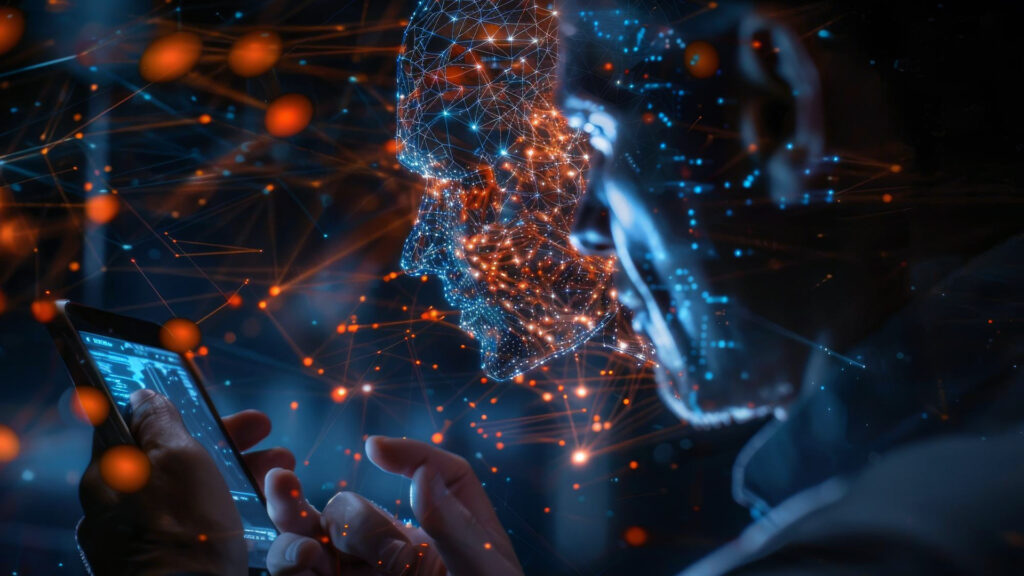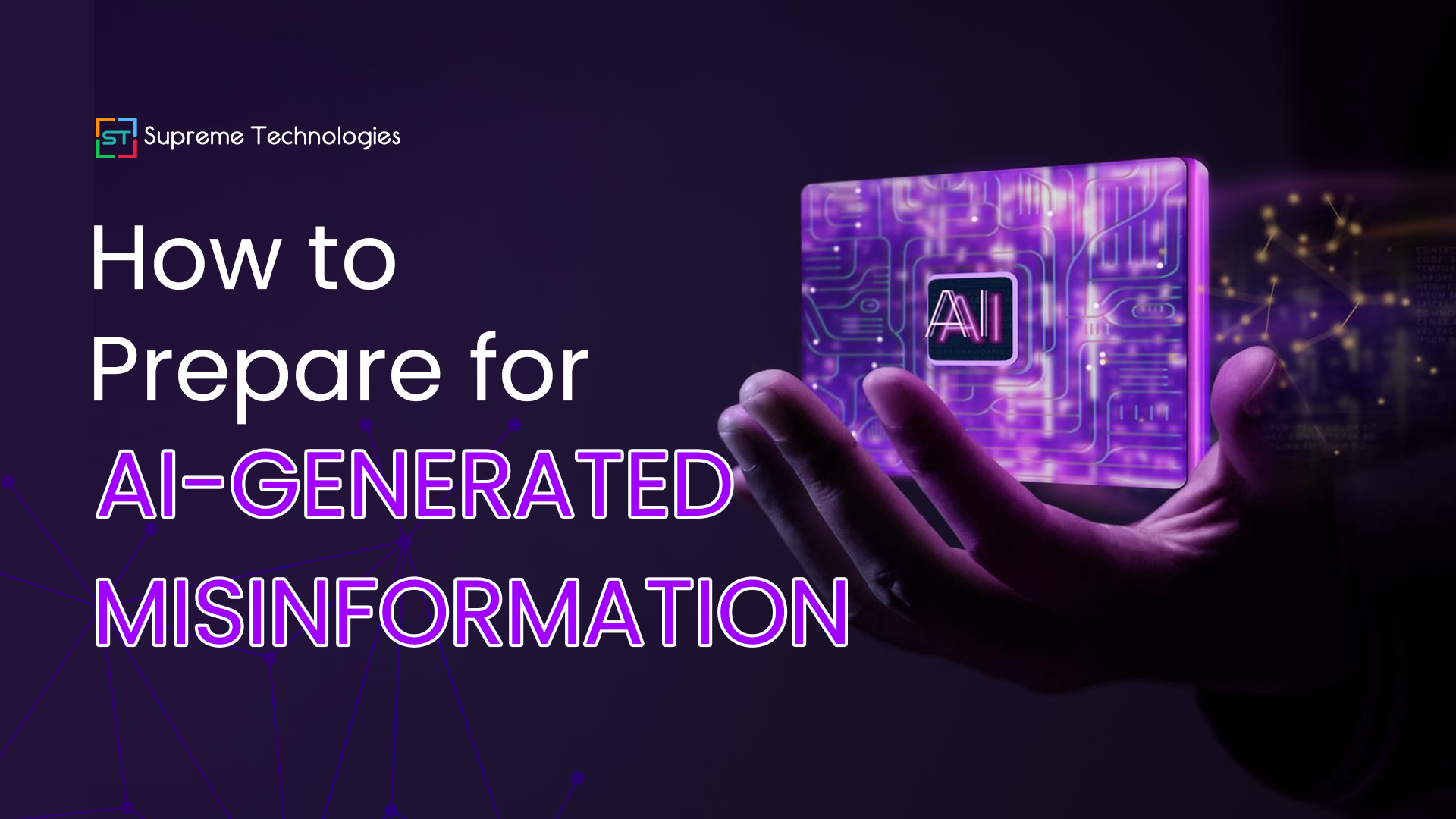Recently, we’ve witnessed the emergence of highly potent new artificial intelligence (AI) tools that can easily produce text, images, and even movies that remarkably resemble humans. Advanced language models trained on large datasets are used by tools such as ChatGPT-4 and Bard to comprehend our commands and prompts deeply. They can then create remarkably realistic and coherent content on almost any topic imaginable. In this blog, we’ll explore the implications of this AI advancement and how you can prepare to navigate the landscape of potential misinformation it may bring.
The Dark Side: Spreading Misinformation
While, these cutting-edge AI generators are proving to be incredibly useful for a wide range of creative, analytical, and productive tasks. They also pose a significant risk – the ease with which misinformation may be distributed online on a scale that is rarely seen. You see, the AI isn’t that knowledgeable about truth and facts. Even though it is quite good at crafting stuff that seems authoritative and compelling. The AI systems are highly capable of recognizing patterns from the massive datasets they trained on, but they can still make factual mistakes and state inaccurate information, often with overstated confidence.
This means the impressive texts, images, or videos created by AI might accidentally contain false or misleading information. That appears plausible, which could then get shared widely by people online who believe it is truthful and factual.
Misinformation vs. Disinformation

It’s important to understand the key difference between misinformation and disinformation. Misinformation simply refers to misleading or incorrect information, regardless of whether it was created accidentally or not. However, disinformation refers to deliberately false or manipulated information that is created. Also, spreads strategically to deceive or mislead people.
While generative AI could make it easier for malicious actors to produce highly realistic disinformation content like deep fake videos crafted to trick people. So, experts think the more prevalent issue will be general accidental misinformation getting unintentionally amplified. As people re-share AI-generated content without realizing it contains errors or false claims.
How Big Is the Misinformation Risk?
Some fearful voices worry that with the rise of powerful AI tools, misinformation could completely overrun and pollute the internet. However, according to Professor William Brady from Kellogg School who studies online interactions, this might be an overreaction based more on science-fiction than current data. Research has consistently shown that currently, misinformation and fake news account for only around 1-2% of the content being consumed and shared online.
The larger issue, Brady argues, is the psychological factors and innate human tendencies that cause that small percentage of misinformation to spread rapidly and get amplified once it emerges, rather than solely the total volume being created.
Our Role in Fueling the Fire
Part of the core misinformation problem stems from our own human biases and patterns of online behavior. Research has highlighted our tendency to have an “automation bias” where we tend to place too much blind trust in information that is generated by computers, AI systems, or algorithms over content created by humans. We tend to not scrutinize AI-generated content as critically or skeptically.
Even if the initial misinformation was accidental, our automation bias and lack of skepticism towards AI lead many of us to thoughtlessly share or re-share that misinformation online without fact-checking or verifying it first. Professor Brady calls this a “misinformation pollution problem” where people continuously re-amplify and re-share misinformation.
They initially believed it was true, allowing it to spread further and further through our behavior patterns.
Education is the Key Solution
Since major tech companies often lack strong financial incentives to dedicate substantial resources toward aggressively controlling misinformation on their platforms. Professor Brady argues the most effective solution is to educate and empower the public. On how to spot potential misinformation and think critically about online information sources.
Educational initiatives like simple digital literacy training videos or interactive online courses could go a long way, he suggests, especially for audiences like older adults over 65. That who studies show are the most susceptible demographic to accidentally believing and spreading misinformation online. As an example, research found people over 65 shared about seven times as much misinformation on Facebook as younger adults did.
These awareness and media literacy programs could teach about common patterns and scenarios where misinformation frequently emerges, like around polarizing political topics. Also, when social media algorithms prioritize sensational but unreliable content that gets easily passed around. They could share tactics to verify information sources, scrutinize claims more thoroughly, and identify malicious actors trying to spread misinformation.
Developing this kind of healthy skepticism, critical thinking mindset, and ability to identify unreliable. Information allows people to make smarter decisions. About what to believe and what not to amplify further online, regardless of the original misinformation source.
Be Part of the Solution
Powerful AI language models like ChatGPT create some new challenges around the ease of generating misinformation. We’ll have to adapt to it, it’s not an inevitability that misinformation will completely overwhelm the internet. Tech companies can certainly help by clearly labeling AI-generated content, building more safeguards into their systems, and shouldering some responsibility.
But we all have a critical role to play as individuals too. By continually learning to think more critically about the information. The sources we encounter online, verifying claims before spreading them, and avoiding blindly believing and sharing content. Are just because each of us can take important steps to reduce the spread. The viral impact caused by misinformation in the AI era.
Conclusion
As AI tools like ChatGPT become more powerful, the risk of misinformation spreading online increases. While some fear it could overrun the internet, current data suggests it’s a smaller problem than imagined. However, our own biases and behaviors play a significant role in amplifying misinformation. Therefore, educating ourselves to spot and verify information can help combat this issue. Being critical thinkers and responsible sharers online. We can all contribute to reducing the impact of misinformation in the age of AI.
Check our Blogs for more updates.

